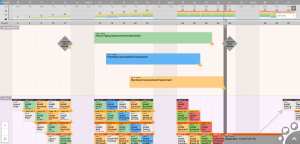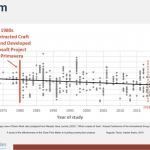(By George Hunt, Lead – Pre-Sales/Sales Engineering Touchplan) Throughout this series, we have discussed a number of ways in which takt can be utilized to structure our work and bring great results to our projects. While implementing takt alone offers enormous benefits to the work, coupling it with structured improvement cycles (deliberate experimentation) can elevate it to the next level. Many teams talk about continuous improvement, but often they are more sporadic in the practice. If done alongside our regular takt planning, it can give us the structure needed to develop lasting habits that won’t fall by the wayside.
Establish a Cadence of Formal Reviews
Building in a cadence to review progress is important for keeping everyone engaged. Since the work on-site is already being planned to a regular takt time, it should be easy enough to plan for experimentation and check-ins.
In fact, creating a swimlane in Touchplan specifically for improvements can keep these activities at the forefront of everyone’s minds. If we are reviewing the improvement activities along with our usual work, we start to understand that our work and improvement are one in the same. This can be key to sustaining ongoing improvements throughout a project.

Establish an improvement agenda
Understanding what is valued by the team is an important step to ensuring clear direction and improvement towards the desired goal. With takt, an obvious goal would be continuous flow. Maybe the team also wants to have a project where there are zero punch list items at the end of the job. Whatever the overall goals are, they will drive the direction of our improvements as well as the interim steps that need to be taken to reach them.
Experiment towards better in way of the Toyota Kata
Without getting into too much detail on exactly what the Toyota Kata is, in a nutshell, it incorporates a structured and focused approach to create a continuous learning and improvement culture. This falls in line with what we have talked about in the previous sections.
It is important to note that the emphasis is put on doing small, incremental “experiments” that bring us closer to the next goal. While we learn and adjust, we keep the change small to avoid a larger-scale disruption to our productivity that a more significant change brings. This limits impact and gives us feedback sooner.
While many of us try to practice continuous improvement, it can very often turn into something that falls off after some time. By coupling the idea of improvement cycles with our takt planning, we can add a structured program of learning to our projects, resulting in an amazing jobsite culture and enhanced positive results.
For additional information on how your can improve project planning and bring great results to your construction projects check out the following video on Touchplan Insights.










